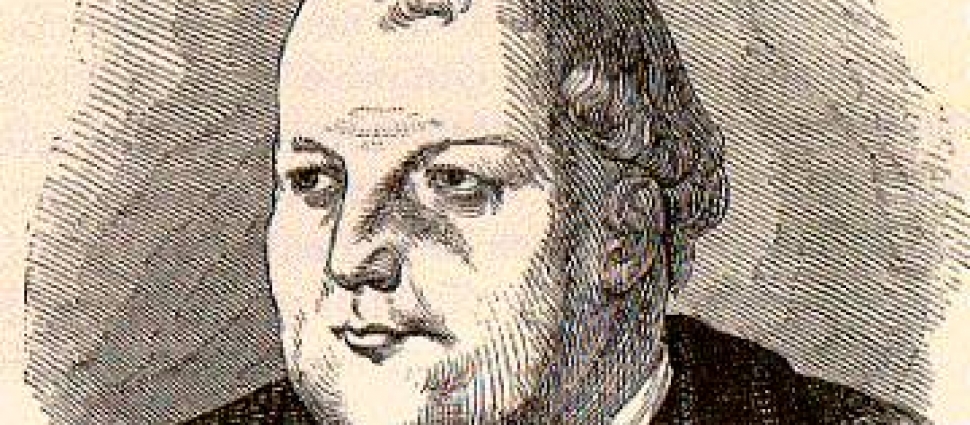Johann Von Staupitz – Luther’s “First Father” in the Doctrine of Predestination

Johann Von Staupitz – Luther’s “First Father” in the Doctrine of Predestination
When Johann Von Staupitz first met Martin Luther, probably in 1506, he saw a young man who was both inquisitive and talented, with a strong potential to teach at the newly founded University of Wittenberg where the elector Frederick III of Saxony had appointed Staupitz dean of theological studies. He might have even been hoping that Luther could one day take his place. He had no idea of what was going to happen.
Born in Saxony in the 1460’s and educated at Leipzig, Cologne, and Tübingen, Staupitz entered the Order of the Augustinian Eremites in 1490 in Munich. He later served as prior of Augustinian houses in Tübingen and Munich. Frederick III brought him back to Saxony in 1502 and enlisted his help in establishing the University of Wittenberg. Staupitz had known Frederick since childhood, and shared many of his aspirations. This connection with Frederick was later instrumental to the elector’s relationship with Luther. In 1503, Staupitz was elected vicar-general of the Reformed congregation of the Hermits of Saint Augustine.
Mentoring Luther
Although Staupitz was Luther’s superior, the two developed a relationship of mutual respect. Staupitz’s role in calming Luther’s distressing fears of God’s judgment are well-known. It was in these exchanges that Staupitz showed his impressive pastoral concerns and his understanding of the gospel as the announcement of the salvation unconditionally performed by God through Christ for his elect.
Later, Staupitz produced a treatise on this belief in predestination as a source of great comfort for believers and the foundation for every aspect of human salvation. He saw this as pure and simple Augustinian theology.
This is what he communicated to Luther, encouraging him to look at the objective grace of God for believers, based on the merits of Christ and not on their own. He told him to look at the wounds of Christ. Luther called Staupitz “my very first father in this teaching,” adding: “If Dr. Staupitz had not sought me out, I should have been swallowed up and left in hell.”[1]
Staupitz was also a sought-after preacher (although he once remarked that in his earliest, rather dry sermons on Job he might have afflicted the poor man “with a worse plague than boils”[2]). He was so popular in Nuremberg that a circle of friends created a circle called Sodalitas Staupitziana, which included the artist Albrecht Dürer. As it was later for Luther, one of his friends preserved a collection of Staupitz’s “table talks.”
The time spent with Luther convinced Staupitz that he had found someone who could take his position at the university, or at least lighten his load. When Luther said he would not live long under the teaching and preparing lessons, Staupitz told him not to worry, since God had plenty of work for good teachers in heaven.
In 1512, at the age of twenty-nine, Luther became a professor of Biblical studies at Wittenberg, a position that he kept until his death in 1546.
Parting Ways
Initially, Staupitz stood by Luther even through the indulgence controversy, although he encouraged him to consider recanting in order to save his life. When Cardinal Cajetan called Luther to Augusburg for an interrogation, Staupitz tried to mediate the discussion. When the impossibility of reconciliation became clear, he released Luther from his vows (giving him more freedom to act) and advised him to flee.
Staupitz himself left the Augustinian order in 1521 to join the Benedictine monastery in Salzburg, where he was consecrated as abbot. The reasons for this change are not clear, as Staupitz, as a outstanding representative of the Roman Catholic Church, could not speak as freely as Luther about his thoughts, but it was probably due to the pressure the Augustinian order had placed on him to bring Luther back to his senses.
Staupitz and Luther remained good friends and continued to write to each other, although Luther’s views took a different turn. Luther’s doctrine of justification by faith alone, for example, was not something that Staupitz had ever taught or embraced, and was not tightly blended with the doctrine of election.
In 1524, while he continued to affirm his love for Luther as that of David for Jonathan, Staupitz denounced the direction the Reformation had taken in some cases. He died the same year, still in good standing with the Roman Catholic Church (although, in 1559, Pope Paul IV placed his works on the Index of Prohibited Books).
[1] David Curtis Stenmetz, 2002, quoted in Mark A. Lamport, ed., Encyclopedia of Martin Luther and the Reformation, Volume 2, Rowman & Littlefield, 2017, 120.
[2] David Curtis Steinmetz, Luther and Staupitz: An Essay in the Intellectual Origins of the Protestant Reformation, Volume 4, Duke University Press, 1980, 5.





